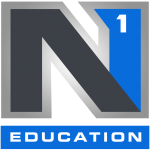
Join The Top 1% of Personal Trainers By Learning How to Apply Correct Biomechanics In Your Programming
Learn more about exercise setup, selection, how you can bias different divisions of certain muscles and more in our full online course with over 20 hours of instruction.
Take your coaching to the next level with more efficient training by applying this knowledge immediately.
Before jumping in to our full 18+ hour course, try a free sample of a few lessons that will introduce you to our approach to training and biomechanics

We've spent hundreds of hours and tens of thousands of dollars to not only sort through and evaluate the existing information, but to complete our own experiments to deliver top-quality knowledge directly to our students.
Here are some of our more recent lab experiments showing how to bias different tissues by selecting a proper setup as well as busting some common training misconceptions.
The long head like all the other triceps, is biased by doing elbow extension when the shoulder is also in alignment. This is in the scapular plane with shoulder extension for the short position and shoulder flexion for the lengthened position.
Here are two options you can use to bias a bit more long head, or just have as extra tools in your training toolbox. Remember, the worst case scenario if the opposing argument against using biased exercises were true, is these exercises are equally effective. And remember, no exercises are a must.
So what happens to the glute max when adding knee bands during hip extension exercises?
Spoiler alert, it’s not helping you just add more work for the abductors like the glute med and minimus. It’s also DECREASING the output of your glute max.
We do more than just look at the research. We conduct our own experiments to both verify and test hypotheses. Some of the simple info we pass along for free. More complex concepts and application that require detailed explanations are covered in the online courses.
The lateral head shows a greater bias when doing extensions in an abducted shoulder position for full shortening, and reaching across the body adducting for the lengthened position. So it’s lined up when the humerus is more in the transverse plane with some relative internal rotation. The videos are easier to take in than the description.
There’s a lot of limits to EMG when just comparing means for a single muscle. Our approach is to compare the relationship between all synergistic muscles in a motion, which can help us see how the nervous system changes its bias among exercises.
We don’t have data to say what the magnitude of difference these positions make on hypertrophy still. But as I will repeatedly say, we are finding the best possible options to bias these tissues, so you’re not really taking any risk by implementing them as long as you still apply volume and effort into your training to the same degree, and follow the principles of using short vs lengthened bias movements to suit your goals.
The biceps has two heads, which both cross the elbow and the shoulder joint. Some may think that with a movement as simple as elbow flexion, that we can’t get a practical difference in training one head or the other. I would beg to differ both anecdotally, observationally, and with the combination of the published research, and what we do in the N1 Lab.
What Do These Types Of Experiments Tell Us As Trainers?
Understanding the most efficient setup for individual muscles, or divisions, can help us choose more effective exercises for our clients. It can help us filter out the “fitfluencer” exercises that are popular because they “look good” versus ones that are actually the best option for what you’re trying to train.
Taking it a step further, understanding the characteristics of different exercises should influence our programming decisions. Helping us produce faster and more consistent results amongst clients.
Reviews of Our Courses
It’s been mind-blowing
“The education here of approaching it from a completely different standpoint from anything else I’ve seen has been revolutionary for me […] I feel like I didn’t give you guys enough money, to be completely honest.”
– Aaron, Coach & Podcast Host
Not Your Typical Classroom Stuff
“There is no other course on the market right now that teaches you how to apply what you learn in a book to real life”
-Nathalia Melo, Ms. Olympia, Fitness Coach
You’re going to walk away knowing what to do as a personal trainer
“When I got my NASM certification, I realized I did not know enough. […] You want to be able to give your clients the best, and that’s what I feel I’ve achieved from this experience. “
– Heather
The execution stuff we’re doing here is fantastic
– Curtis Howden, Personal Trainer & ACE Instructor
Very Valuable, I would recommend it to anybody
“There are a lot of “fluff” exercises that you see on Instagram that don’t really do anything and I’m wasting my time doing them. Come take this course and actually learn how to properly train for your physique”
-Monica Ellis, IFBB Pro
You have something you can apply immediately
The problem with most educational experiences is everything is so theory-based that you have no application when you leave and most of the time you leave more confused than when you came in. This experience of N1 Education has stood out for me, because i’ve been doing this for two decades, is you have something that you can apply as soon as you leave the course
It’s an all-in-one, a one-stop shop for everything that you need to be a good trainer, a good coach, because they are taking all the principles from multiple sources and basically throwing out what is useless and taking what you can apply to real people
–Allen Cress, IFBB Pro, Personal Trainer
Questions?
- Q: How is this different from other anatomy courses or learning from textbooks?
A: We’ve spent thousands of dollars buying other courses to see what else is out there, and nothing we’ve seen is even close to what we do in terms of detail, accuracy, and application. The largest flaw in the other anatomy or biomechanics courses is that they lack an understanding of anatomy applied in 3D and in conjunction with the nervous system. This leads to incorrect exercise execution and recommendations that at best are inefficient and at worst, detrimental. Hundreds of hours have been spent researching and testing to validate the information provided in these courses, not including real-world application with ourselves, our clients, and the clients of our students who have gone through these courses already.
- Q: Are there any prerequisites for the courses?
A: The only prerequisite for the courses is a basic knowledge of anatomy (know what the muscles are called)
and we’ll take care of the rest! We provide vocabulary support and foundational materials in the membership area to make sure get the most out of every course regardless of your current education or experience. We also have over 10+ hours of additional videos that you’ll get as a “bonus” when signing up for all 3 courses where we go through case studies and other topics to give you even more practical real-world examples of how we use and apply what you’ll learn in the course. We want to give you as many resources as we can to help you succeed.
- Q: Do you offer payment plans?
A: If available in your area, there are options for either PayPal Pay Later or Klarna that allow you to set up a payment plan. If those options are not available in your area, we can offer a payment plan via PayPal Invoice for the full certification (3 courses) bundle, but not for individual courses. Please contact [email protected] for payment details if you’re interested in the PayPal Invoice option.
- Q: Will these courses certify me to train people in a gym?
A: The courses will teach you information that is essential for every good trainer to know, and set you apart from your peers in terms of knowledge and skills. However, they are not yet widely accepted for a license as a PT. So you will need to get a certificate from NASM, ACE, etc. to attain the license and insurance necessary to work in a gym.
